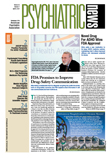Shire and its newly acquired subsidiary—New River Pharmaceuticals—won final approval from the U.S. Food and Drug Administration (FDA) last month to market lisdexamfetamine (Vyvanse) for treatment of attention-deficit/hyperactivity disorder (ADHD) in children and adolescents aged 6 to 12.
Shire CEO Matthew Emmens said in a press release that the new medication should start showing up on pharmacy shelves in the second quarter of 2007.
Lisdexamfetamine is a prodrug composed of the amino acid L-lysine bound to the amino group of the therapeutically active ingredient d-amphetamine. When taken orally, the therapeutic effects characteristic of amphetamine are blocked by the conjugated amino acid. However, when the prodrug is absorbed from the gastrointestinal tract, it must go through the patient's liver to undergo first-pass metabolism. During first-pass metabolism the conjugated L-lysine is removed, and the d-amphetamine regains its therapeutic potential.
In theory, as a prodrug, Vyvanse should carry less liability for diversion and abuse because of the necessity to metabolize the drug before it can become active. If someone tried to open a Vyvanse capsule and snort the powdered ingredients, for example, or tried to dissolve the powder in water and inject it, the result should be significantly reduced potential for the“ high” associated with amphetamine formulations.
Shire and New River said that when the prodrug was administered orally and intravenously in two clinical human drug abuse studies, it “produced subjective responses on a scale of 'Drug Liking Effects' (DLE) that were less than d-amphetamine, at equivalent doses.” The DLE scale is commonly used to measure abuse potential of a medication when given to a study population of known substance abusers.
The possibility of being able to prescribe a central nervous system stimulant medication for patients with ADHD that carried less potential for abuse, Shire said, should make the medication a sales blockbuster. The company had hoped that the U.S. Drug Enforcement Administration (DEA), which regulates controlled substances, would not list the drug as a Schedule II controlled substance (C-II), as it does with most other stimulants. Shire was hoping for a C-III or C-IV scheduling, in recognition of the theoretically reduced potential for abuse.
However, pending final approval of the medication, the FDA proposed to the DEA that lisdexamfetamine be listed as a C-II medication. In reviewing data on the drug, the DEA concurred with the FDA's recommendation and issued a proposed rule, listing lisdexamfetamine as a C-II controlled-substance medication.
According to Shire and New River, clinical trials they funded of lisdexamfetamine showed that it provided “significant efficacy compared with placebo.” In phase II and III clinical trials the medication was associated with significant improvements in ADHD symptoms, compared with placebo. Efficacy was demonstrated at 30 mg per day, 50 mg per day, and 70 mg per day. In studies using a simulated school day in a classroom environment, significant benefits were associated with lisdexamfetamine compared with mixed amphetamine salts (Adderall XR). Significantly improved behavior as well as significantly improved academic performance were demonstrated in those taking lisdexamfetamine compared with study participants taking placebo.
As a stimulant medication, lisdexamfetamine will carry the same prominent label warnings regarding increased potential for cardiovascular risks and worsening or emergence of psychiatric symptoms, such as delusions or hallucinations, aggression, or agitation.
The most common side effects seen in clinical trials with children taking lisdexamfetamine were decreased appetite, difficulty falling asleep, stomachache, and irritability.
More information regarding Vyvanse, including full prescribing information, is posted at<www.shireadhdtreatments.com/>.▪
